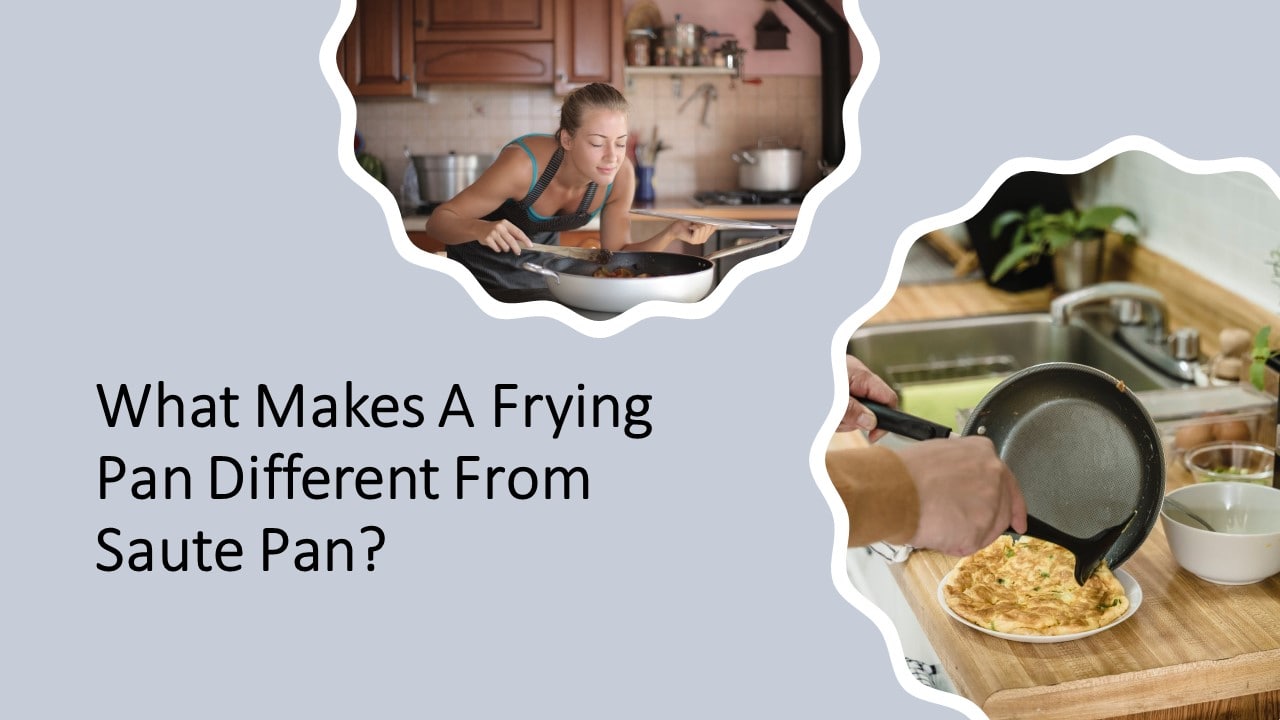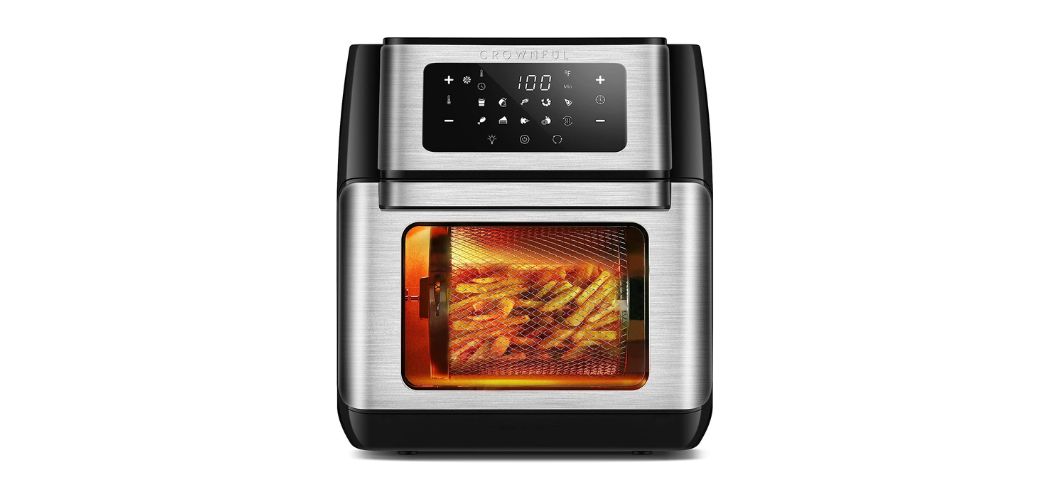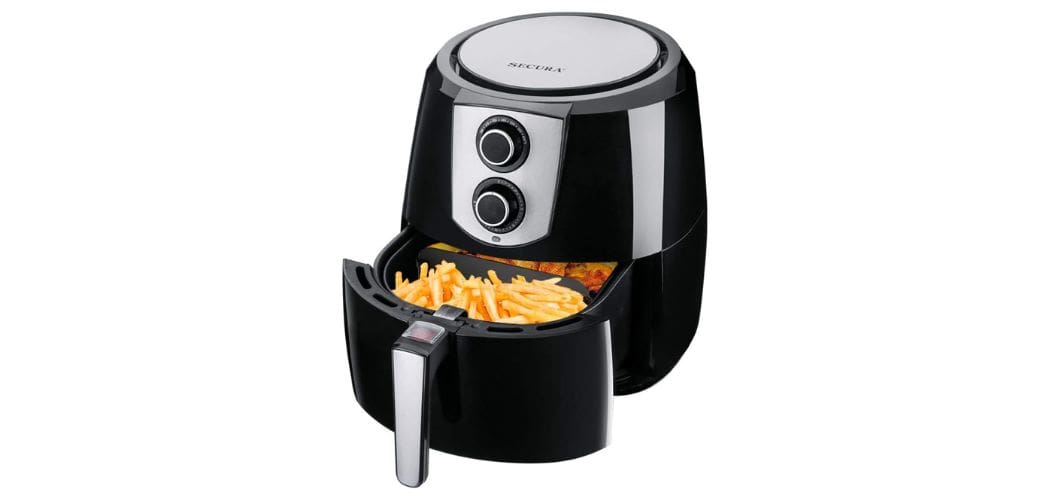You’ve undoubtedly heard of words like frying pan, saute pan, whether you’re a seasoned chef or a novice. Some individuals will use them identically in some situations.
If you’re searching for a new pan for your kitchen, you’re undoubtedly asking yourself, “How do I know which one to buy?” Is it better for you here to opt for a frying pan or a saute pan? Is there a material difference?
Yes, there are changes in form and function between the two pans, and those distinctions might matter depending on the sort of cooking you’re performing. Read on to discover more and choose which pan is most suited to your cooking technique.
Table of Contents
Quick Comparison Guide:
| Aspects | Frying pan | Saute pan |
| Design and form | It has a plain cooking surface, but the edges are short and curve up and expand out gradually | A level cooking surface runs into a uniform sidewall generally between 3 and 5 inches tall |
| Pan Size | Popular sizes are 8-inch, 10-inch, and 12-inch | Measured in quarts and come in sizes ranging from 3 to 6 quarts |
| Pan Material | Many choices and varieties | Limited choices |
| Weight | Lighter | Bulkier |
| Handle | Comes with a long, solid handle that is easy to hold | The handle is broad and firmly fastened |
| Evaporation | More evaporation | Less evaporation |
Frying Pan Vs. Saute Pan: What’s The Difference?
Design And Form:
The form and structure of a saute pan and a frying pan distinguish them. They have in common that they are both spherical and feature a flat cooking surface.
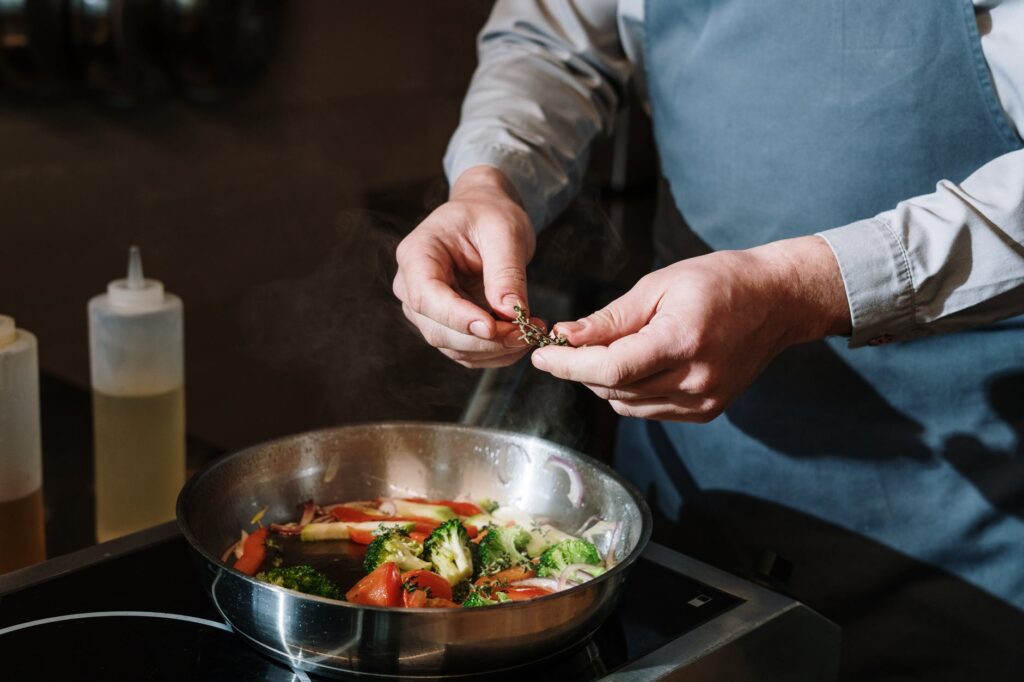
A level cooking surface runs into a uniform sidewall generally between 3 and 5 inches tall in saute pans.
The huge cooking surface is ideal for sizzling, and the high sides make it possible to cook and store enormous quantities of food or liquid.
This choice is ideal for one-pan dinners, braises, light frying, and everything that calls for more fluid and a longer cooking time.
Frying pans have a plain cooking surface, but the edges are pretty short and curve up and expand out gradually.
They’re ideal for throwing ingredients and fast evaporation because of this. A frying pan is ideal for hot and rapid stir-frying, sizzling fish and meat, or frying eggs.
Pan Size:
Saute pans and frying pans are available in a variety of sizes. However, there are vital points to consider while selecting what’s best for you. The measurement of saute pans is in quarts, and they come in sizes ranging from 3 to 6 quarts.
A decent general rule is that each quart will serve about one person when choosing a size. For instance, a 5-quart saute pan should serve 4 to 6 people. However, since everyone’s appetite is different, prepare ahead.
However, frying pans are almost usually measured by the circumference of the pan across the top. The most popular sizes you’ll find are 8-inch, 10-inch, and 12-inch frying pans.
8-inch frying pans make excellent egg pans and accommodate a large chicken breast or fish fillet. This size will be enough if you’re cooking for one person. However, it is on the small side and may restrict the use of your pan.
Pan Material:
The kind of pan material determines how and what you may use it for. Not to forget how long it’ll last and if you’ll have to make any extra effort to keep it performing well. Stainless steel or nonstick saute pans are nearly often the only options.
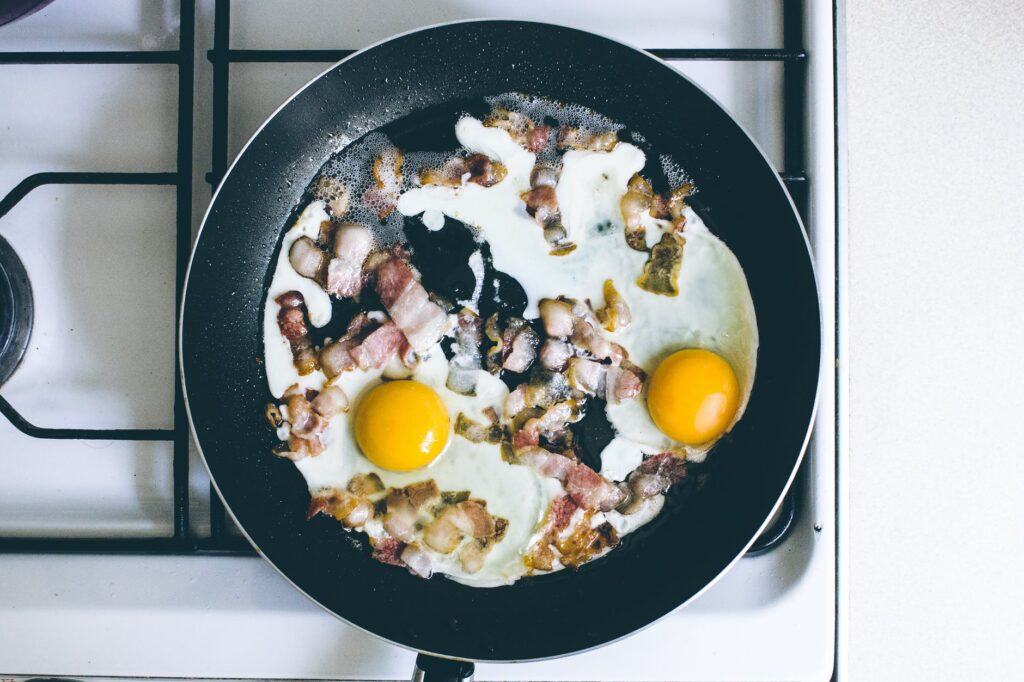
A nonstick saute pan may be the best option if you value simplicity and ease of use.
Due to Teflon’s temperature restrictions, nonstick pans are less durable and not adapted for searing and caramelisation.
When it comes to frying pan materials, you’re spoilt for choice. Like a saute pan, a nonstick frying pan is an attractive option for convenience and simplicity of use. Many people only use it as an egg pan.
Stainless steel frying pans are long-lasting and straightforward to clean. Although, it might require some getting used to.
Weight:
Unlike frying pans, pans for sauteing are substantially taller. That implies they have more material, making saute pans bulkier in general.
The additional weight isn’t generally a problem since saute pans aren’t meant to toss and turn items. On the other hand, the design of frying pans makes them easy to maneuver and handle with one hand.
Handle:
Handles are an essential part of any decent piece of cookware. A saute pan’s handles are broad and firmly fastened, ideal for how hefty they may be when full of food.
Frying pans also have a long, solid handle that is pleasant to grasp. That curvature or angle comes in handy when grasping and manipulating the pan on an entire cooktop. It also provides leverage, making throwing items into the pan seem effortless and natural.
Evaporation:
In comparison to a frying pan, saute pans have fairly tall sides. This explains why a to saute pan is ideal for one-pot recipes and other liquid-heavy foods.
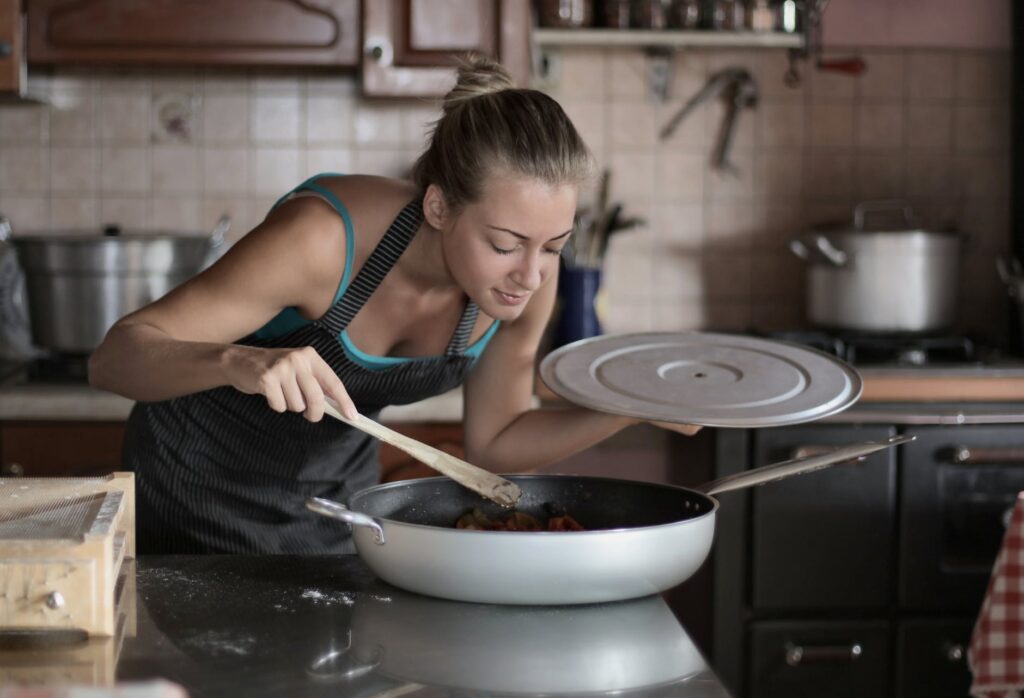
It holds more food and inhibits evaporation, allowing more moisture to stay in the pan.
However, since they still have such a large cooking surface, you may decrease the sauce efficiently when required.
The large cooking area and low edges of a frying pan are essential. They’re not designed to contain a lot of food. Instead, the short sides enable you to mix items and decrease liquids quickly.
FAQs
How To Wash Frying Pans?
When you clean the pan by hand, it will endure for a long time and look better. You can brush in the orientation of the grain of the material. Rinse well, sterilize, and dry fully by air.
Can I Wash Both Saute And Frying Pans In The Dishwasher?
If you’re going to put them in the dishwasher, be sure to use a metal-safe detergent.
What Is The Use Of Stainless Steel Base In Saute Pans?
The stainless steel foundation not only gives the pan a contemporary and elegant appearance but also enables it to function on induction cooktops.
Final Verdict
Both of these pieces of cookware are fantastic choices. Each, though, has its own set of benefits and drawbacks portrayed in the points given above.
If you need to fry in a tiny quantity of oil in a short time, a frying pan is the most acceptable option. It will also make tossing the ingredients much more straightforward.
However, a saute pan is essential if your components demand high heat and are enclosed while cooking. It’s also excellent for liquid-based substances. In an ideal kitchen, both these pans would prove to be a beneficial addition.

